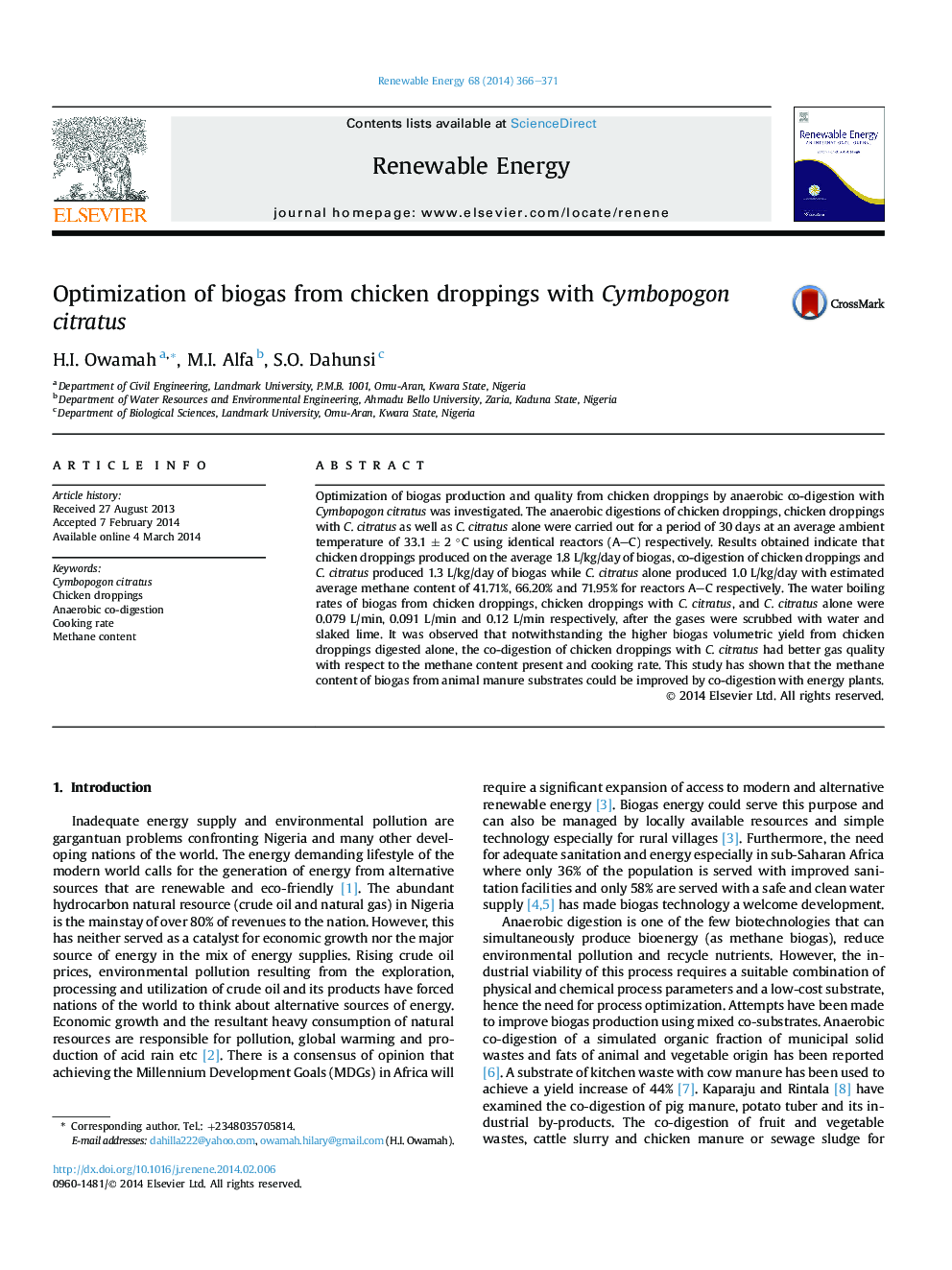| Article ID | Journal | Published Year | Pages | File Type |
|---|---|---|---|---|
| 300142 | Renewable Energy | 2014 | 6 Pages |
•Biogas production from the co-digestion of chicken droppings and Cymbopogon citratus is reported for the first time.•Despite the high volumetric biogas yield from chicken droppings, the methane content was relatively low.•Co-digesting chicken droppings with C. citratus increased the methane content of the biogas.•Higher cooking rate was obtained from gases of reactors B and C than reactor A.•Longer retention period for C. citratus could increase its biogas yield.
Optimization of biogas production and quality from chicken droppings by anaerobic co-digestion with Cymbopogon citratus was investigated. The anaerobic digestions of chicken droppings, chicken droppings with C. citratus as well as C. citratus alone were carried out for a period of 30 days at an average ambient temperature of 33.1 ± 2 °C using identical reactors (A–C) respectively. Results obtained indicate that chicken droppings produced on the average 1.8 L/kg/day of biogas, co-digestion of chicken droppings and C. citratus produced 1.3 L/kg/day of biogas while C. citratus alone produced 1.0 L/kg/day with estimated average methane content of 41.71%, 66.20% and 71.95% for reactors A–C respectively. The water boiling rates of biogas from chicken droppings, chicken droppings with C. citratus, and C. citratus alone were 0.079 L/min, 0.091 L/min and 0.12 L/min respectively, after the gases were scrubbed with water and slaked lime. It was observed that notwithstanding the higher biogas volumetric yield from chicken droppings digested alone, the co-digestion of chicken droppings with C. citratus had better gas quality with respect to the methane content present and cooking rate. This study has shown that the methane content of biogas from animal manure substrates could be improved by co-digestion with energy plants.
